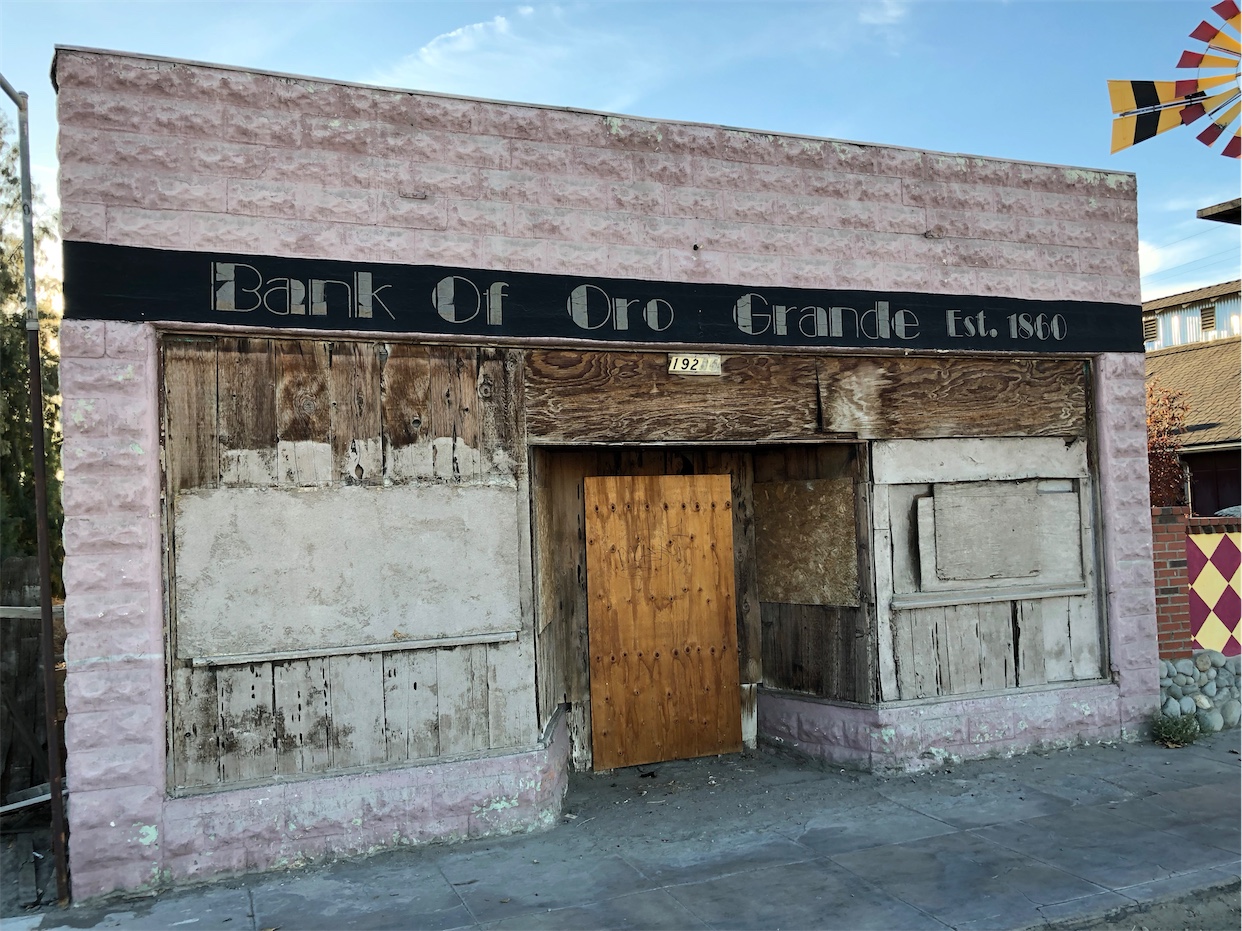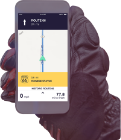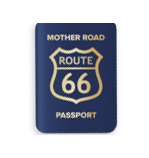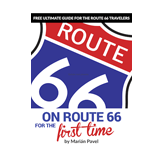FAQ
How do I stay safe while on Route 66?
First and foremost: there is no 100% safe. It just doesn’t exist. There is always some risk involved, and depending on your risk appetite, you might want to take on more or less, and should prepare accordingly.
Please know we wrote this article with those who like to take some risks in mind. Do not let it scare you out of your trip of a lifetime.
Simple precautions
- Keep plenty of drinking water in the car, about a gallon per person will cover for a day in the worst conditions you’ll encounter
- Keep the gas tank above half in the desert, don’t fuzz over the cost of gas in remote areas: consider half to be empty.
- Don’t venture (far) away from your car in the desert. It can be seen from the air while you cannot. It provides shade. And above all: you can’t carry enough water to hike out of the desert without help.
- Don’t venture into tall grasses, turn over rocks, logs, etc. or reach under them.
- Learn how to identify poison ivy, poison oak, and poison sumac and avoid all contact with those plants.
- Insect repellent can be helpful if you venture outside of your car.
- Pack a tick removal tool.
- Keep your street-smarts with you.
- If you’re not driving a rental car: make sure it’s in excellent mechanical condition.
If you get in trouble
Should you encounter serious problems: CALL 911.
For those who like to venture off the beaten path
The remainder of this document is written to help you know the dangers and try to point you to plan to avoid the worst of it.
If you’re merely going to drive in a car on nicely paved roads, most of what follows is going to be over the top.
But if you’re the type that will crawl through bushes, jump a little creek to snap a picture of a long-forgotten artifact and you’re not used to the local conditions, you might need a few warnings, so read on.
Consider a safety net when you intentionally take risks
Consider a safety net when going into desolate areas such as the desert: If you don’t call-in before a given deadline, have somebody who knows your plans in detail call 911 on your behalf. This way -even when you can’t call for help- those who can help get notified you didn’t perform your agreed upon “I’m safe”-call on time.
The one you rely on doesn’t need to be local to where you are. You only have to trust them and not forget to let them know that you’re OK.
Nature
Nature is most probably your biggest threat if you are unprepared. Especially if you go off the beaten path, you should be prepared, ready to deal with the issues you might encounter.
Extreme Heat
There are quite a few people every year who get into serious trouble in the desert because they do not heed the warnings about the extreme heat in the desert.
There are too many examples of people dying near Amboy crater after they underestimated the hike to the crater in hot weather. Don’t be the next victim!
Precautions:
- In the desert, stay with your car no matter what. Even if it breaks down, it can be seen from the air. You cannot. Open the hood of the car if you have car trouble. Remember: You cannot carry enough water to walk out of the desert, you’re very likely to die if you try.
- Carry plenty of drinking water in the car. It’s cheap and can save your life. Count on a gallon (~4 liters) a day per person in the desert.
- When out in the heat: limit your amount of exercise and hydrate yourself, use sunblock.
Floods and Flashfloods
Do not enter flooded parts of a road. You cannot see how deep the water is, nor in what condition the road underneath is. Stay safe and take a detour instead.
In areas that see little to no precipitation, there’s a risk of flash flooding. You might well be standing in a (dry) creek that can transform into a raging stream if it rains somewhere in the mountains far away. Even if you’re unlikely to pitch a tent in the middle of its path while on a Route 66 trip, it still can make life quite difficult if your (only) way back out to civilization is now cut-off by a stream that was not there when you drove in.
Precautions:
- Keep an eye out for the predicted weather for the area you’ll be traveling
- Do not drive on a flooded part of a road
Tornadoes
They hit the news big time and are quite capable of causing severe damage. But they are very localized, so the chance of accidentally running into one is very low.
The terminology used in the US includes watches and warnings:
- A WATCH is an indication that the conditions are favorable to the formation of a tornado.
- A WARNING is issued when there’s an indication that a tornado is forming or has formed.
Precautions:
- Keep an eye out on the predicted weather for the area you’ll be traveling
- Don’t drive towards them, listen to the (local) radio if you hear warning sirens to know what’s going on.
- If you get close to one accidentally, staying in your car is not safe: find a safer place like a tornado shelter instead.
Earthquakes
You can’t do all that much at all. Should you be in the -small- area that has sustained significant damage by an earthquake: follow the instructions.
If you’re not in such an area -and even if you are in a city that should get hit, you’re more likely to be outside of the affected area than in it anyway-, stay away from the damaged areas and let officials do what they are trained to do.
Don’t forget to put the folks back home at ease if you’re OK. Otherwise, they’ll assume the worst.
Wildlife
Venomous animals like snakes, scorpions, spiders are what most think about most in this category. And you do need to be careful with disturbing rattlesnakes etc. But there are other, less commonly sighted dangerous animals out in the wild. E.g., there’s a population of black bears in Missouri. And then there are those that carry diseases or can cause serious discomfort to us humans.
- Snakes
- More info from the CDC
- Scorpions
- Scorpion safety tips
- More info from the CDC
- Spiders
- More info from the CDC
- Stinging insects
- More info from the CDC
- Bobcats
- More info from desertusa.com
- Mountain Lions
- More info from desertusa.com
- Deer, Burros, Cattle, etc.
- Any large animal is a serious threat if you run into them with your vehicle.
- If you want to go everywhere Route 66 once ran, you will cross into areas were cattle roam relatively free, including onto the road you’re driving. Same goes for the burros and other large wild animals: they do wander onto the streets.
- Mosquitoes
- Mosquitoes can carry diseases
- More info from the CDC
- Ticks
- Ticks can carry diseases and should be avoided and removed properly.
- More info from the CDC (tick diseases)
- More info from the CDC (Lyme disease)
- More info from the CDC (how to remove a tick)
- Black bears
- While you’re very unlikely to encounter a bear on Route 66, there are black bear populations near Route 66 in Missouri, New Mexico, Arizona, and California.
- Contrary to what the name might suggest, black bears aren’t always black. Bears you could encounter near Route 66 in the wild are all black bears.
- More info from the NPS
- An elaborte article about bear safety (probably too much for Route 66 most tourists)
Precautions:
- Learn about the different wild animals you might encounter. Know how to react to them.
- Never panic. It’s not going to help and might well make things much worse.
- Keep your distance. Most will not attack unless provoked. But make sure to know what provokes them. E.g., running away from a bear provokes it to chase and outrun you!
- When exploring off the beaten path be extra cautious with snakes: wear long pants, high boots, or even snake guards. And avoid tall grasses, rocks, logs, etc.
- Keep insect repellant handy: ticks, chiggers, etc. can be dangerous, but also cause great discomfort when bitten.
- Pack a tick removal tool.
- Keep your eyes on the road while driving, hitting large animals is dangerous.
Plants
Let’s assume you’re not going to eat anything you found in nature, and instead visit the fine dining experiences that Route 66 offers.
Still, some plants can harm you. Poison ivy, poison oak or poison sumac can be found in most regions of the USA and can cause extreme reactions in some.
“Leaves of three, beware of me.”
Precautions:
Traffic
Traffic can be dangerous. We all know that, but sometimes you see people take extra risks on Route 66 because they either want to see or do something on Route 66 or because they’re just unaware of the dangers involved it seems.
We have a separate FAQ entry for those from outside of the USA.
Specifically, for Route 66:
- Don’t stop on the interstate if you see, want to see, or want to take a picture of something.
- Take extra care with unprotected railroad crossings on some of the abandoned roads. Some railroad lines run at pretty high speeds. Trains can’t stop for you, even if they see you.
- Don’t take pictures or videos while driving.
- If you drive solo, read your guide while stopped. Learn it by heart till your next stop. Don’t read a guidebook while driving.
Our reliance on our vehicle
It’s quasi-impossible not to rely on our vehicles, but when leaving the more commonly used paths, we need to be ready that it might run out of something essential, break down, or get stuck beyond our ability to free it again.
Precautions:
- Gas: consider half a tank to be empty when going off the beaten path or out in the desert.
- Drinking water: carry at least a gallon per person per day in the desert.
- Make sure your vehicle is in excellent technical condition, esp. if it’s not a rental: check it before venturing into more desolate conditions or before crossing the desert in it.
- Don’t go off-road beyond your or your vehicle’s abilities.
- Stay away from edges of washouts. They can be severely undercut.
Our reliance on electronic gadgets
Do not solely rely on technology to keep you safe.
Remember that your phone is likely to lose connectivity in some of the more remote areas. This means you cannot call for help, but also that if you rely on it for navigational purposes, it might well fail you. The data connection on your phone is even more likely to become unusable in remote areas than the voice connections.
Heat and electronic devices of any kind are also often incompatible. Even if your device does not need a network to guide you, it can still fail due to excessive heat.
Precautions:
- When hiking in remote areas, have “old school” technology such as paper maps, a compass, etc. in addition to any electronic device such as a smartphone or a GPS device.
- Know how to navigate your way back to your vehicle without the use of electronics.
- Don’t assume you will have cell phone coverage or data connectivity in the more remote areas.
People
We all know there are bad people out there. Unfortunately, they aren’t always easy to recognize until it’s too late.
The vast majority of people who live near or on Route 66 have plenty of experience with the Route 66 tourists. They do know our slower pace, our tendencies to stop and take pictures of things they couldn’t care less for, our lack of knowing our way in places no other typical in-transit tourist would venture, etc. In general, they know 66-ers and are openly friendly to them.
If you venture into more obscure areas where Route 66 ran but where modern guidebooks don’t send you (anymore), take a bit more care with the locals as they might get far more uncomfortable with our tourist behaviors. They might be far more suspicious of you taking pictures, stopping to look at stuff, etc.
Any larger city will have worse areas than others. Route 66, fortunately, doesn’t go into most of these. In most cities, if you venture away from 66, you’ll recognize the bad areas readily from graffiti over bars in front of windows and doors, to razor wire on top of the fences.
- Guns can be scary for those of us visiting from overseas or from areas where guns are scarce.
- The possession of a gun is not a sign of a bad person. Some like to assert their rights, or their occupation needs a gun to keep themselves or the livestock they care for safe.
- Do consider all others armed, even if you don’t see any sign of it. It’s nothing to be scared about, but you should be more careful with provoking them in traffic or otherwise. Stay calm, don’t confront, and move on.
- Private property
- Do not trespass onto private property. The owners are (very) protective of their property and their rights in most cases. If you trespass, you risk being confronted aggressively by the owner.
- Know that sometimes all that is needed to mark an area off-limits is some purple paint marks on posts or trees.
- Homeless people, panhandlers, pickpockets, etc.
- They can be scary. Also, they sometimes are under the influence of alcohol or far worse products.
- Keep some distance and back away from confrontations. Those demanding a handout, politely decline but don’t engage them. It’s a well-known tactic by pickpockets to disguise their contact as them begging for money.
- Some cities have policies that deport homeless people who disturb the tourists too much, so while they might still give you pause, they might be relatively harmless.
Precautions:
- Respect private property.
- Be careful of the bad areas in a town.
- Always assume other people are armed, so stay calm yourself, don’t confront or provoke.
Bad areas
“I heard X is a bad area.”
If you’d stay away from all those areas, you’d not be able to live anywhere. There’s always somebody who got scared. Moreover, the condition in these areas changes over time. Sometimes the local politicians (finally) act and -together with a police and justice system- clean up problems. Bottom line: don’t believe all you read out on the Internet. Use your wits.
Some common problem areas people refer to and the situation at the time of writing:
- Chicago, IL: The really bad areas are not near Route 66. Still like any huge city you need to take care as there’s no way you’ll not find a bad person among that many people.
- East Saint Louis, IL: This is a town in Illinois, to the southeast of Saint Louis. The city has seen far better economic times. Still, over the years the situation is slowly getting better. That said, be careful out there: travel in a group and during the early hours of the day if you want to venture there. [Most Route 66 guides will not send you here, certainly not without warning]
- Saint Louis, MO: The city itself has obvious problems, but the locals insist it looks worse than it is.
- Do NOT park on the Missouri side of the old Chain of Rocks bridge. Park on the Illinois side instead. If possible clean out the car at the motel you’re staying in, before parking there at all.
- Inside Saint Louis itself, the looks of bad vs. good areas change often. Sometimes, in just a block, you seem to go from “war zone”-looks to perfectly fine neighborhoods.
- The areas between the Chain of Rocks bridge and downtown aren’t the best Saint Louis has to offer. Be careful when exploring some of the alignments out there.
- Gallup, NM: is often mentioned to have a bad vibe after-dark and in/around bars. This seems to be more pronounced on weekends. Take care when going out after dark for a drink. The panhandlers also seem to be overly assertive in some places toward tourists.
- Greater Los Angeles: as in any large metropolitan area there are worse parts than others. Fortunately, none of the many Route 66 alignments go into the worst of it. That said, take care when deviating from some of the alignments in some parts as the overall look can quickly deteriorate as you move away from the bigger road that the old alignment still is in those places.
In the context of improving areas: the downtown area of Los Angeles has been transformed in the past few years from a place that was best avoided after hours, into a nice area. There are -even after dark- friendly locals who live there out and about nowadays.






